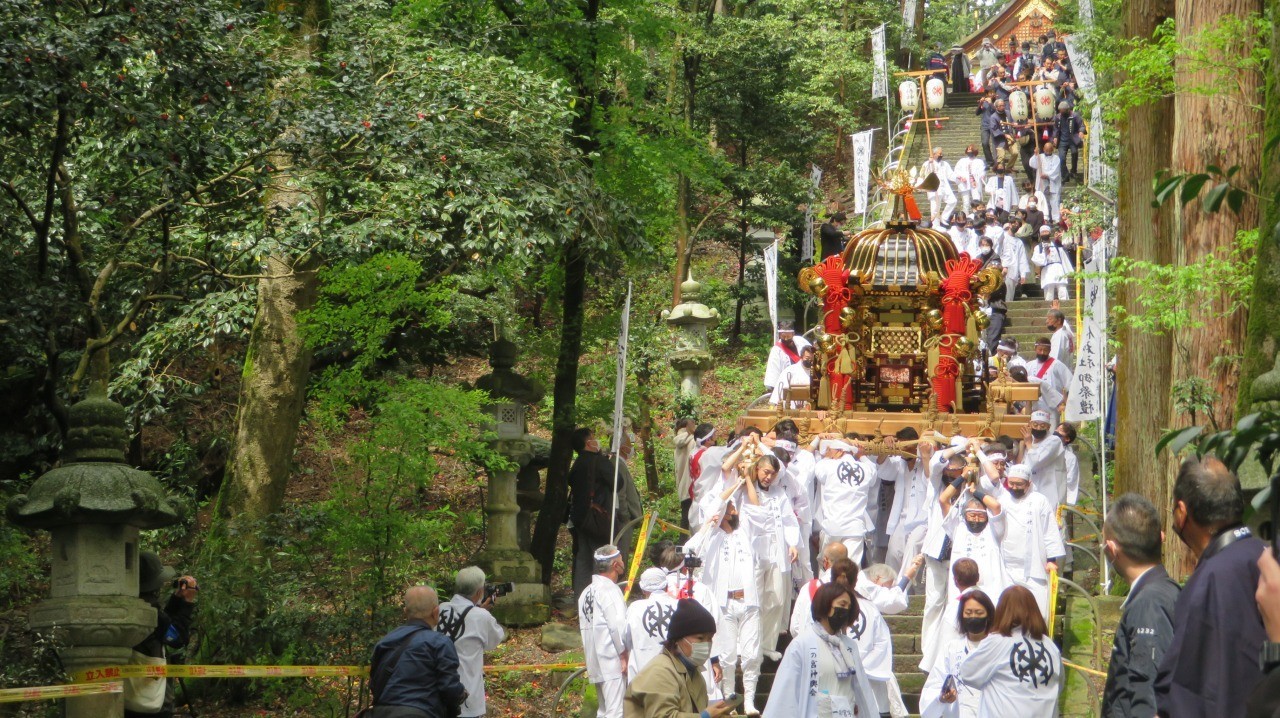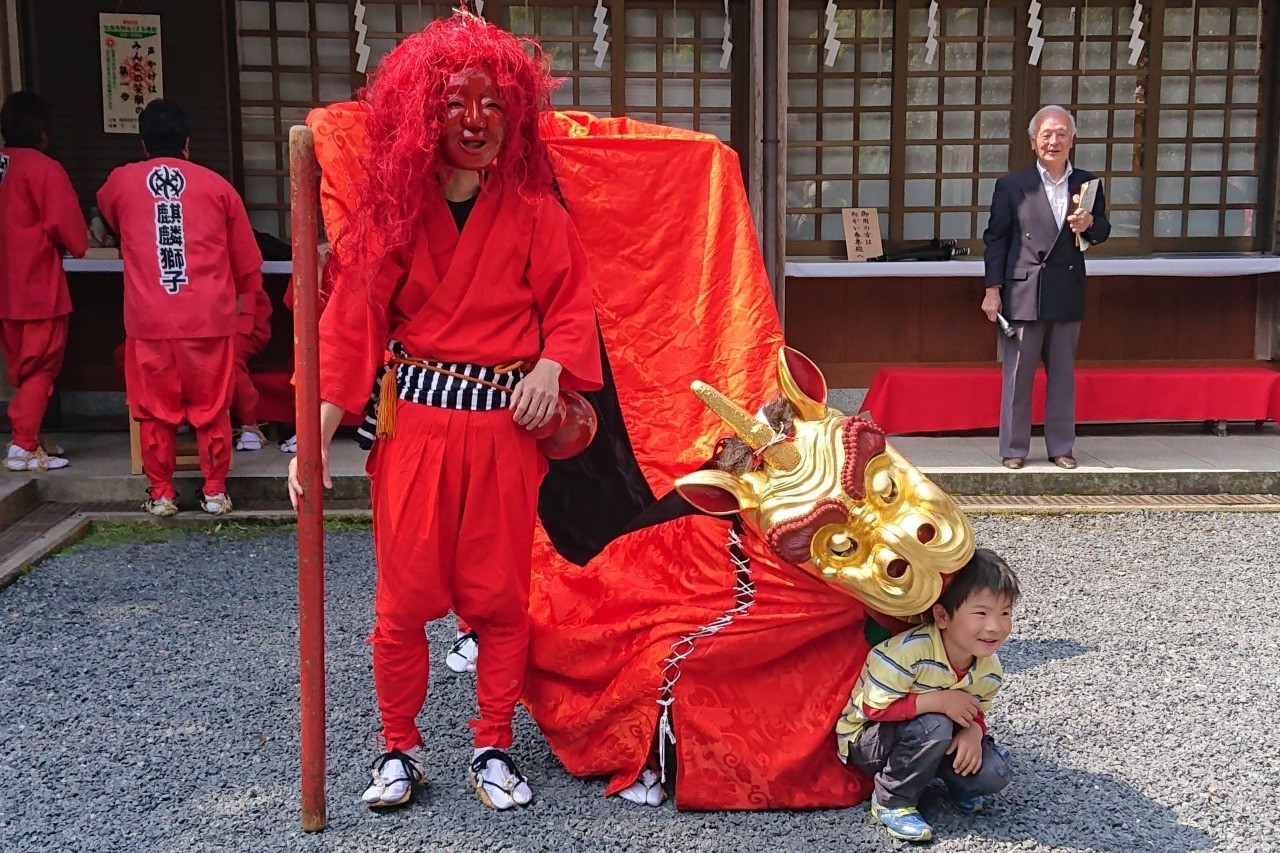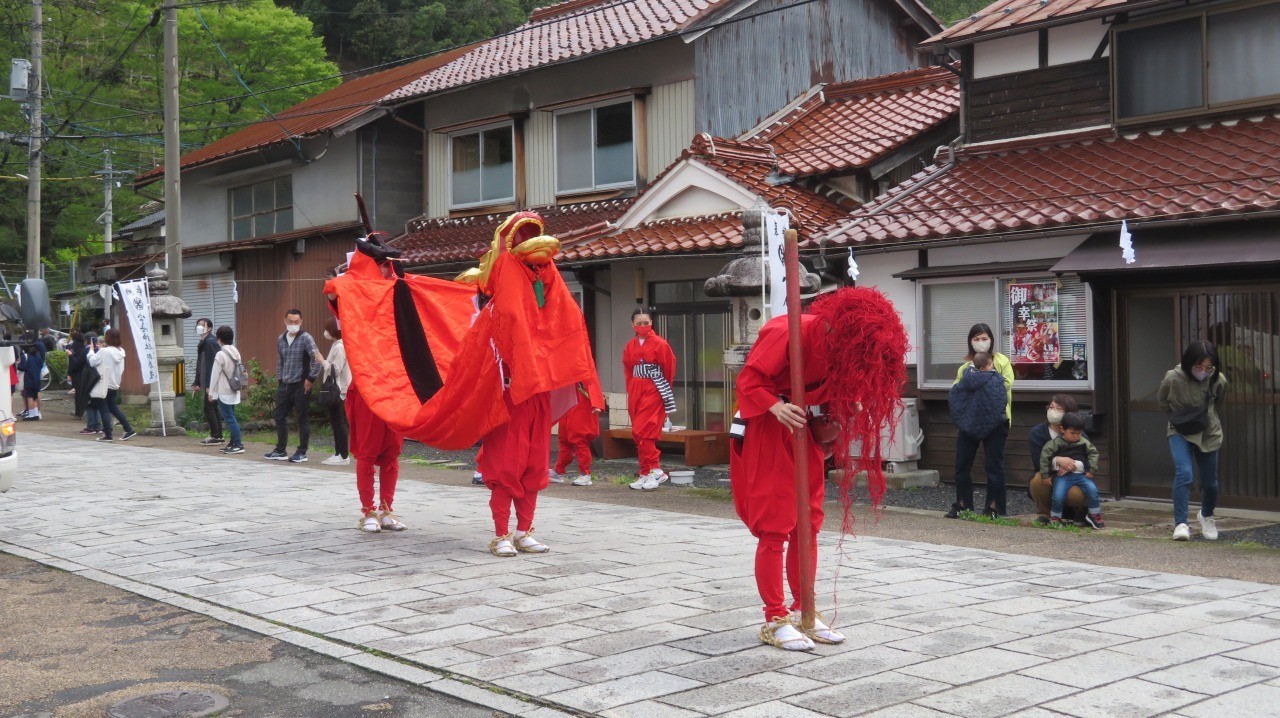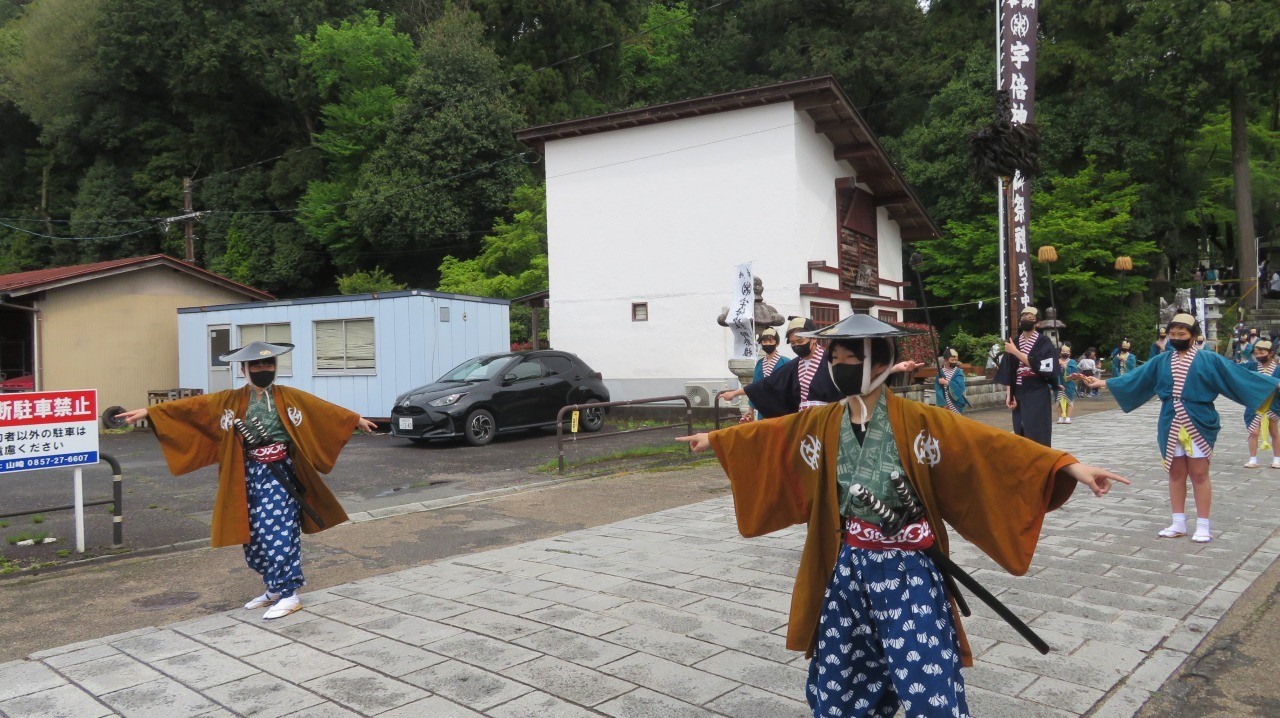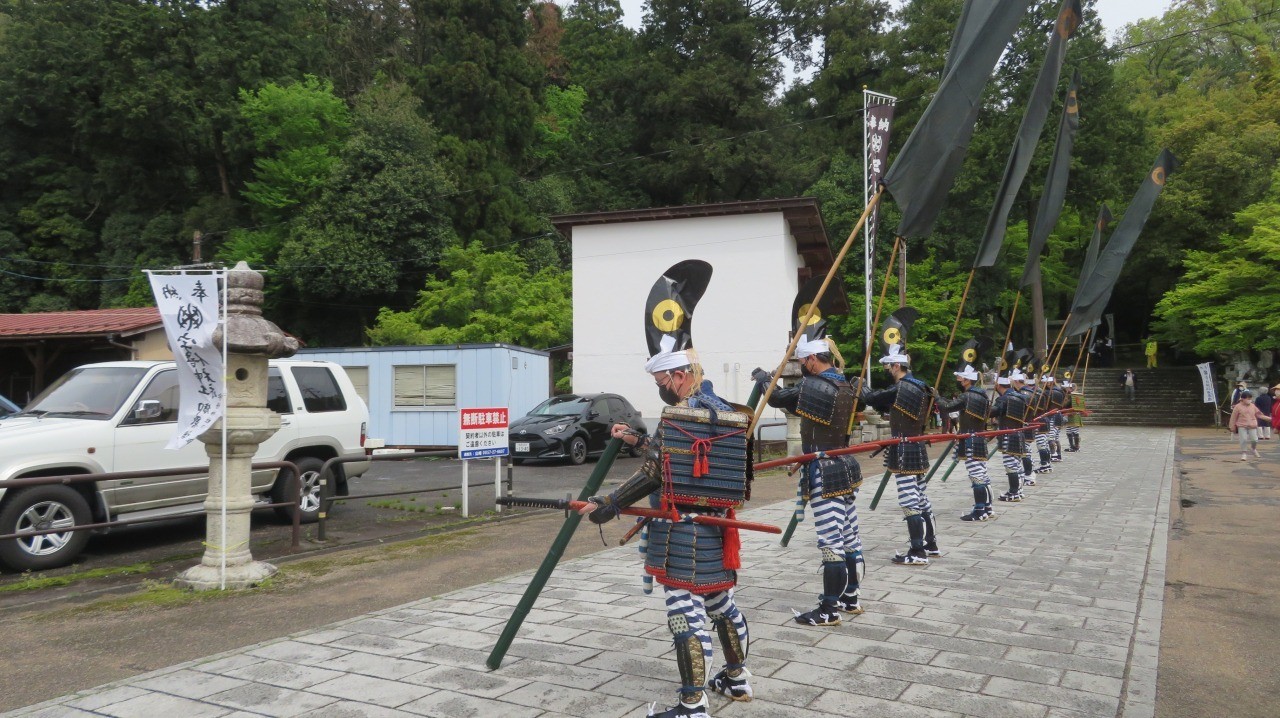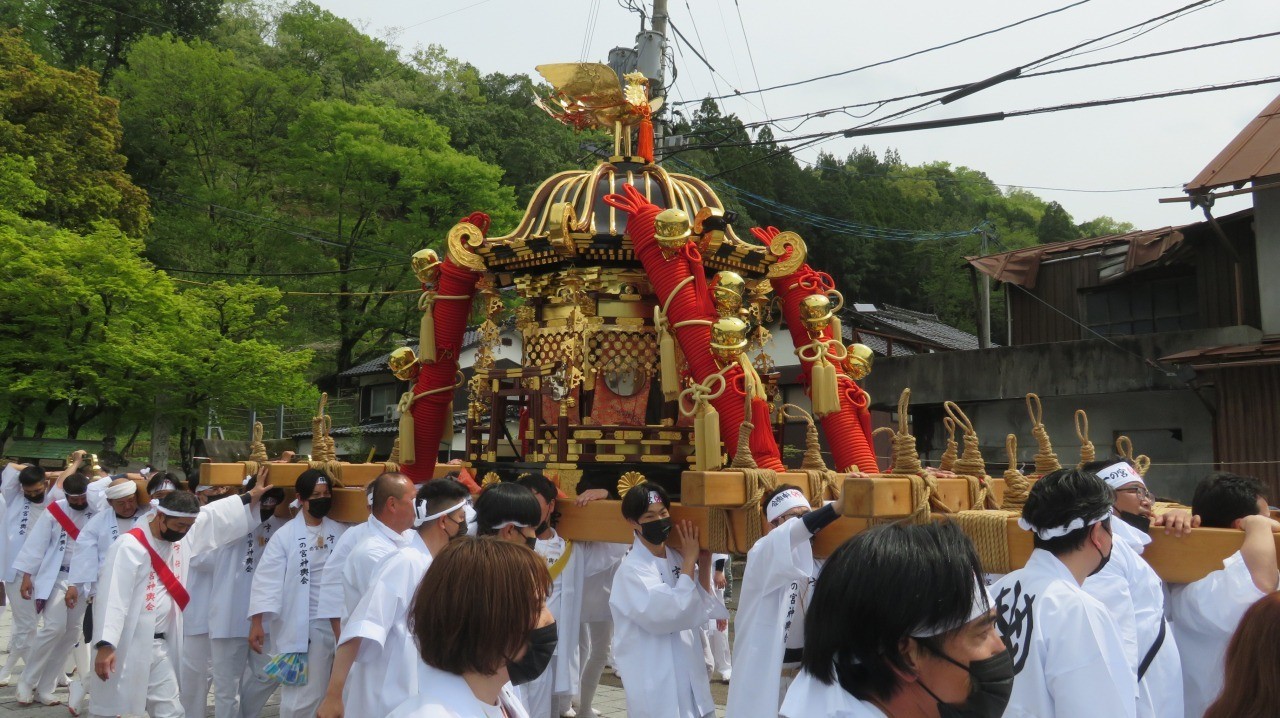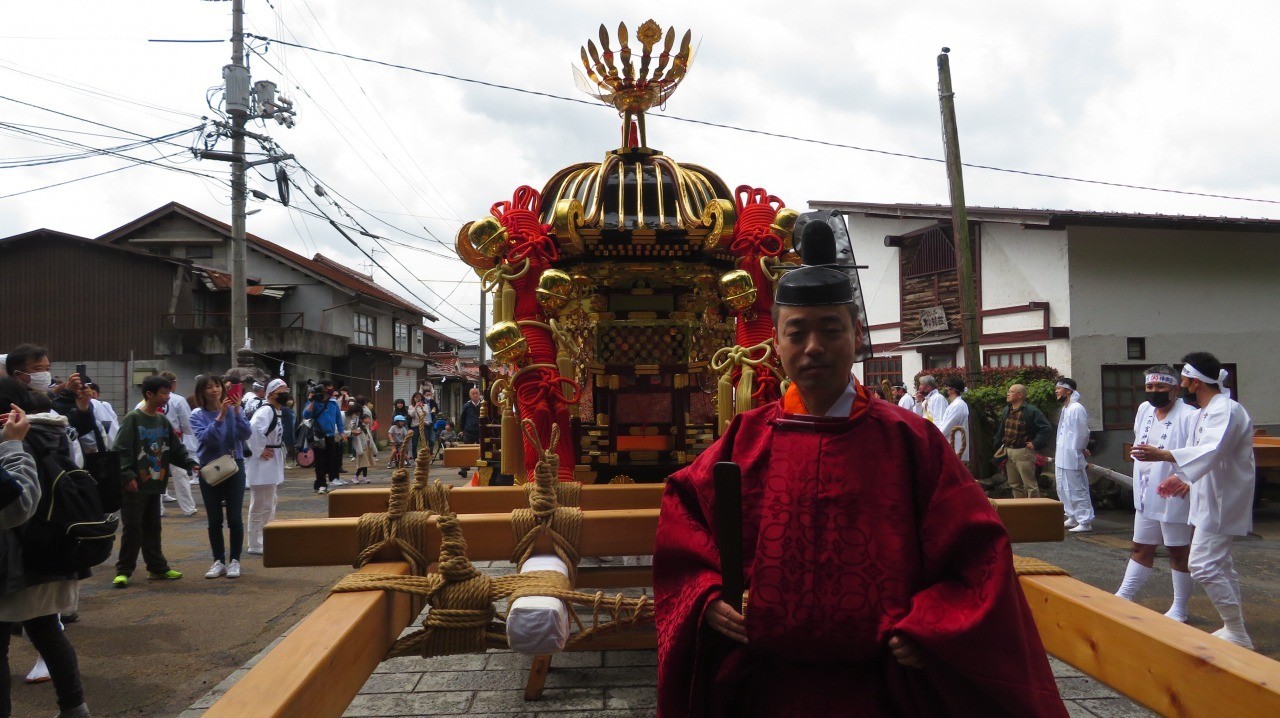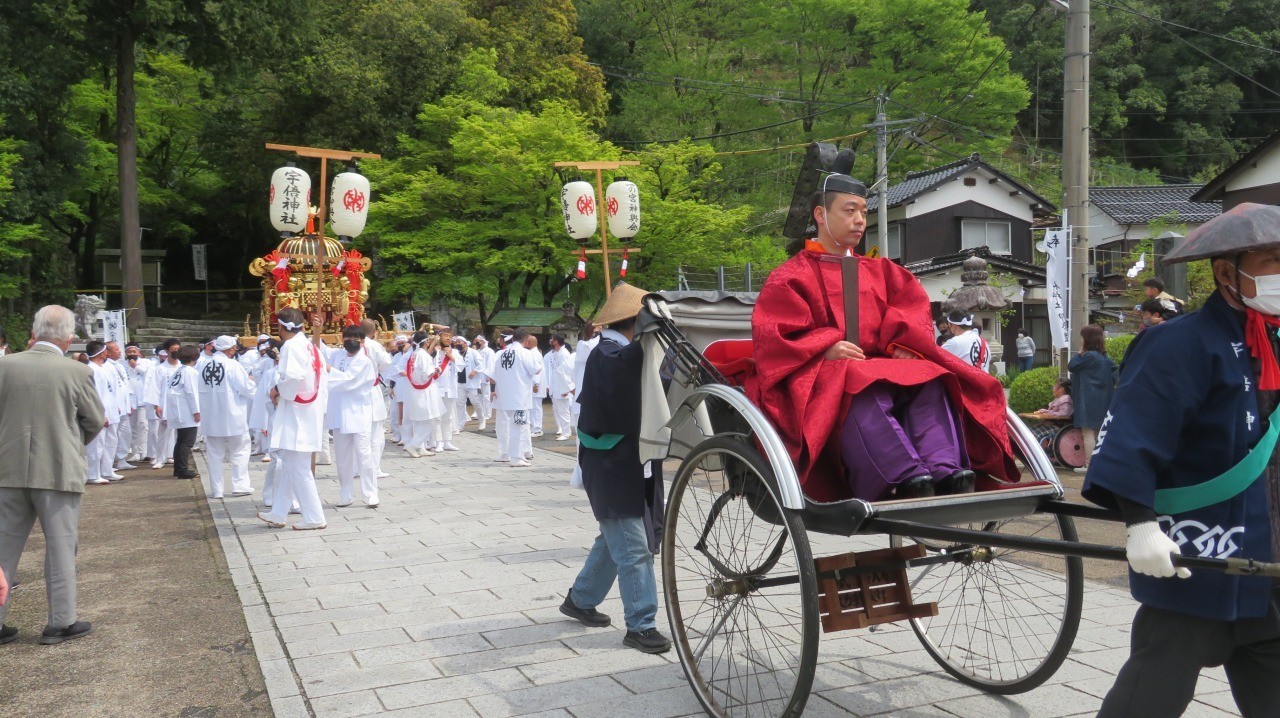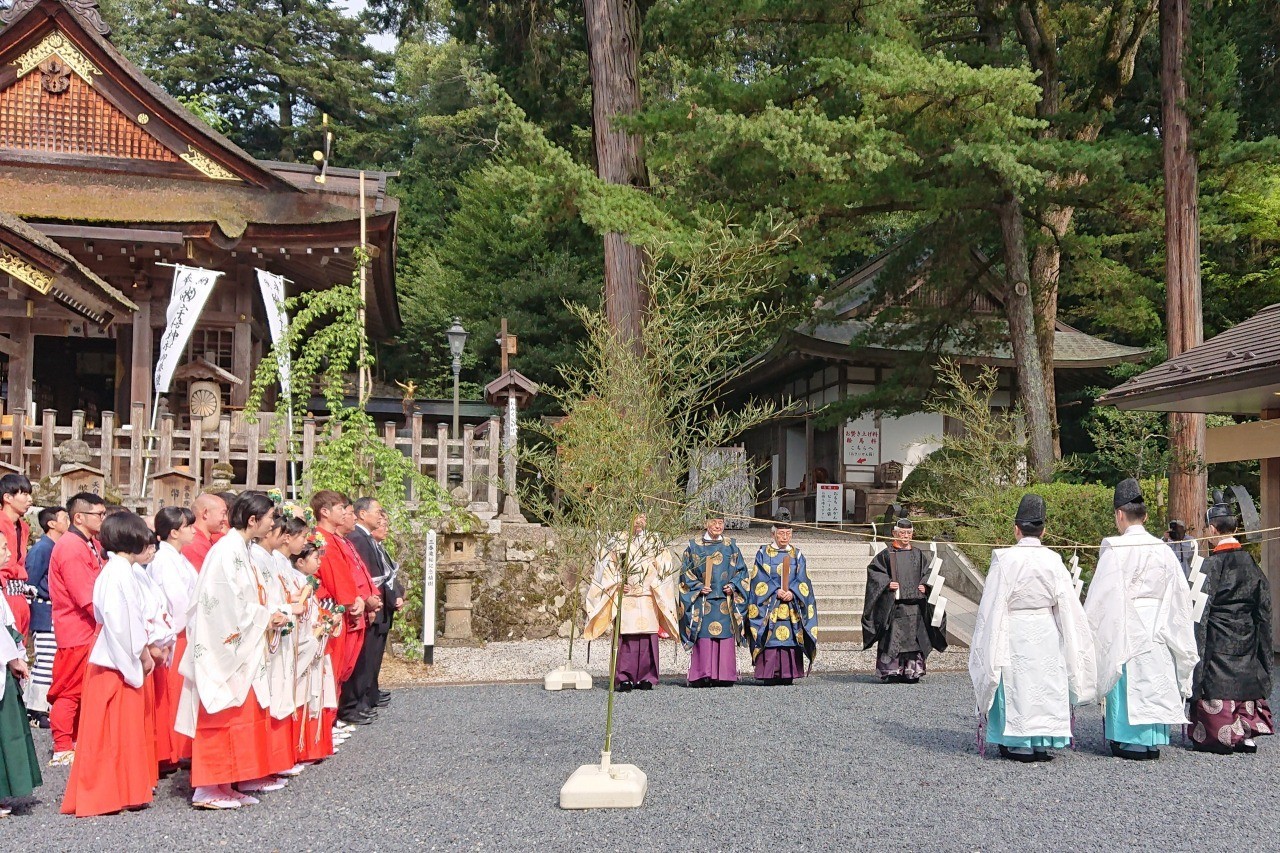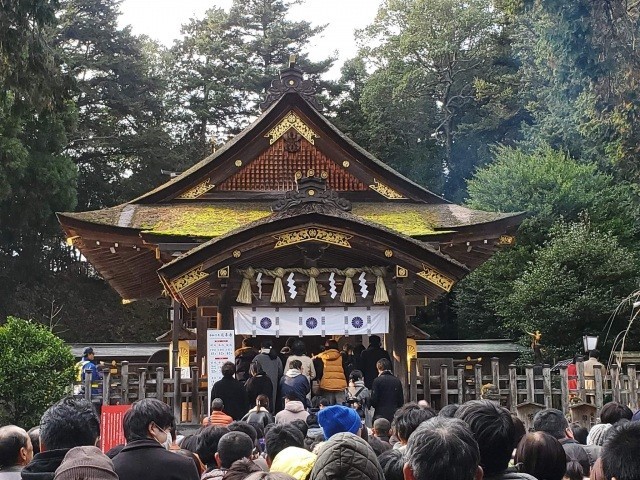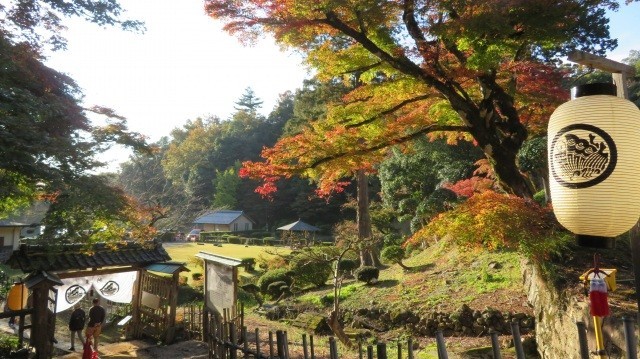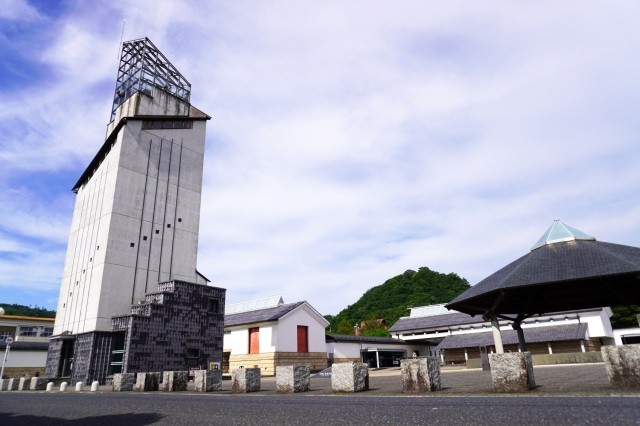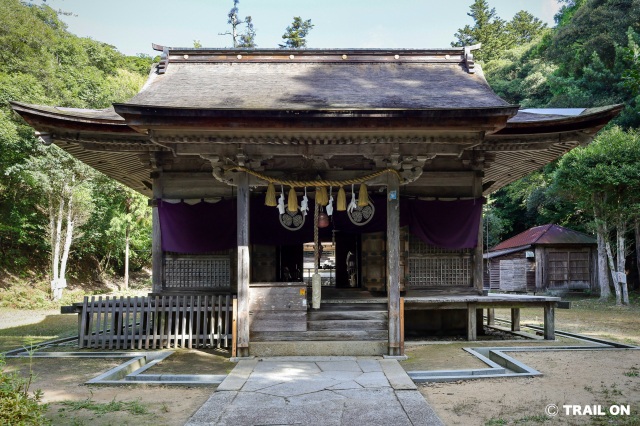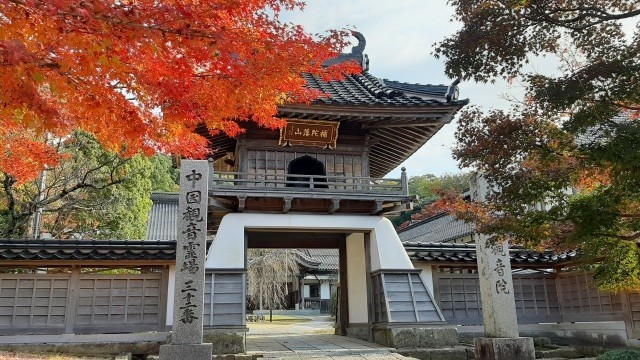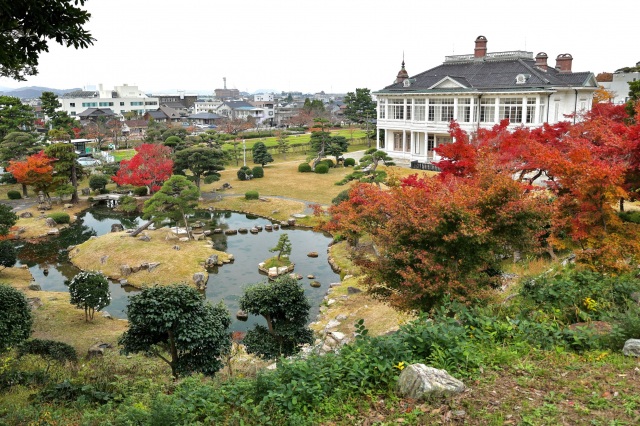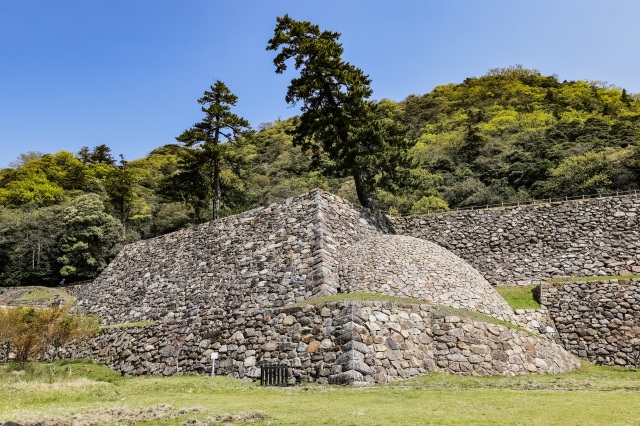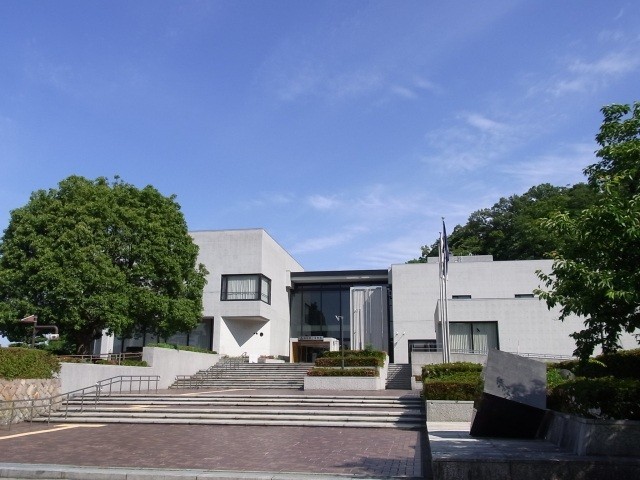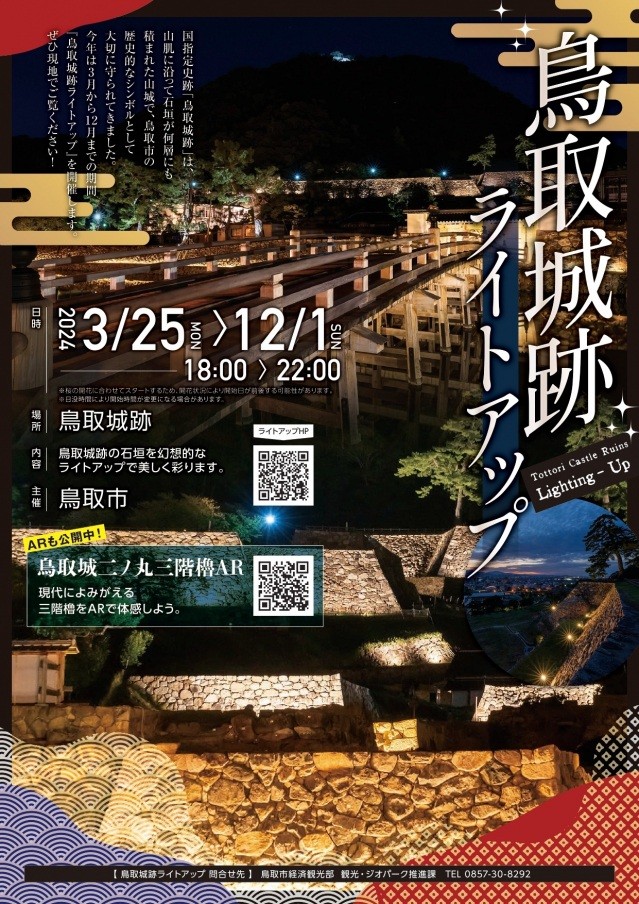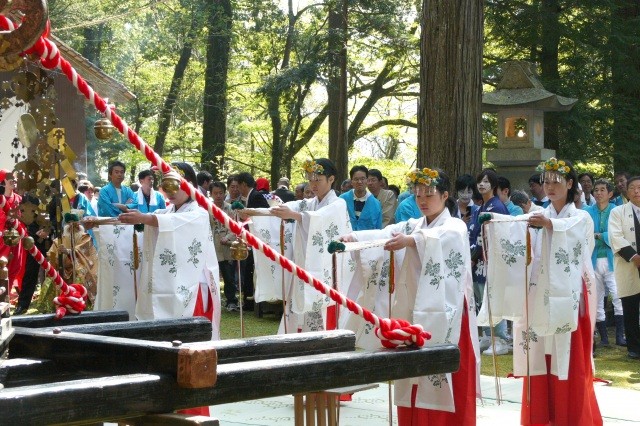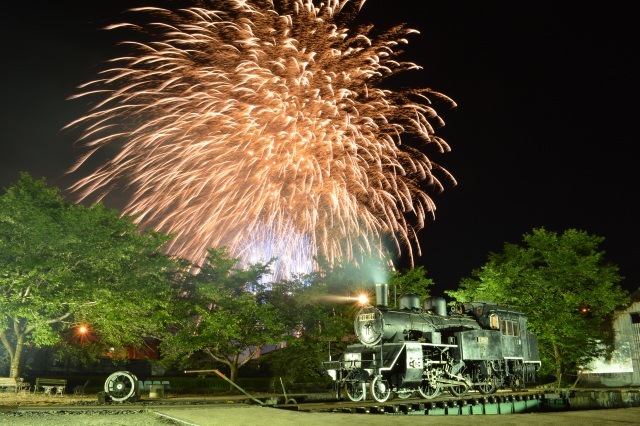Ube Shrine's Reitai-sai and Miyuki-sai
A solemn dance steeped in a 350-year tradition
Ube Shrine is known for enshrining the deity for business prosperity and wealth. The Reitai-sai (annual grand festival) held on April 21 every year is the most important festival in the region.
During the festival, the Kirin-jishi Mai, a tradition dating back about 350 years, is performed as a dedication to the gods. The lion of Ube Shrine has the head of a kirin, a mythical creature with a single horn, and dances in a scarlet costume.The single horn is unique to this region, and the solemn dance with its significant historical and cultural value has been designated an intangible folk cultural property of the prefecture.
On the Saturday or Sunday before and after the annual festival, the Miyuki-sai is held, featuring one of Japan's largest mikoshi (portable shrine). The mikoshi ascending and descending the steep stone steps of the shrine makes a powerful and impressive sight. Highlights include a procession of warriors in armor and the Yatsu-no-mai dance that recreates events from the Edo period between the 17th and 19th centuries. The dances of the miko (priestesses), dressed in beautiful red and white costumes, add a touch of colorful splendor to the festival.
This festival gives visitors the opportunity to experience the traditions and vitality of Japan that have been carefully preserved by the local community.
During the festival, the Kirin-jishi Mai, a tradition dating back about 350 years, is performed as a dedication to the gods. The lion of Ube Shrine has the head of a kirin, a mythical creature with a single horn, and dances in a scarlet costume.The single horn is unique to this region, and the solemn dance with its significant historical and cultural value has been designated an intangible folk cultural property of the prefecture.
On the Saturday or Sunday before and after the annual festival, the Miyuki-sai is held, featuring one of Japan's largest mikoshi (portable shrine). The mikoshi ascending and descending the steep stone steps of the shrine makes a powerful and impressive sight. Highlights include a procession of warriors in armor and the Yatsu-no-mai dance that recreates events from the Edo period between the 17th and 19th centuries. The dances of the miko (priestesses), dressed in beautiful red and white costumes, add a touch of colorful splendor to the festival.
This festival gives visitors the opportunity to experience the traditions and vitality of Japan that have been carefully preserved by the local community.
Area
Basic Information
- Address (Japanese)
- 680-0151 鳥取県鳥取市国府町宮下651
- Telephone Number
- 0857-22-5025(Ube Shrine)
- Fax Number
- 0857-29-2225
- Event period
- Every year on April 20 (eve of the festival) and April 21 (Reitai-sai)
Miyuki-sai on the Saturday or Sunday closest to April 21 - Access
- ・Approx. 15 minutes by car from Tottori Station
・Approx. 15 minutes by bus from Tottori Station; alight at “Miyanoshita” and walk for about 7 minutes - Car Park
- 117 spaces
*Please check the transportation and access section of the official website for details. - Website
- Official website(Japanese)Official Instagram
